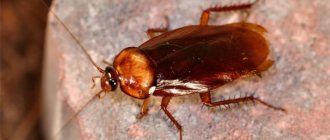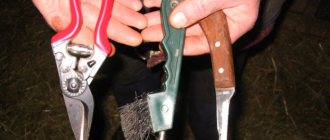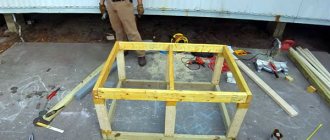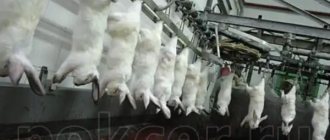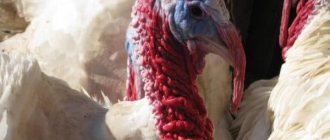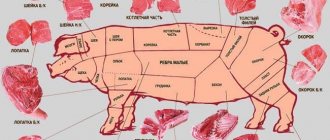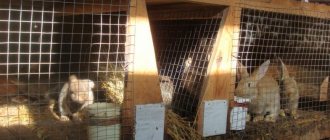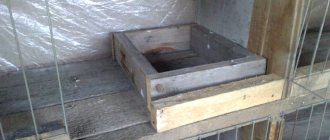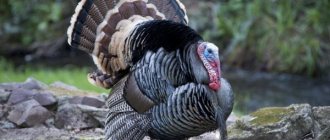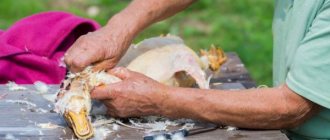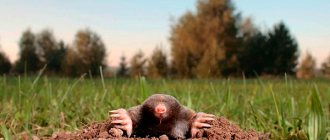The head is probably the cheapest part of a pork carcass. But by no means the most worthless, because it includes such delicacies as tongue, snout, ears. Feel free to take a whole pig’s head from the market, and we will tell you and show you in step-by-step photos how to cut it up correctly so that you can have a lot of delicious dishes on your table at an economical price.
In addition, thanks to this article you will learn what to cook from a pork head, and specifically from each part of it. And then you will no longer be able to pass by a product on the market that is so beneficial for the family budget and attractive to the stomach.
So, you have purchased a pig's head. Her appearance is often not at all appetizing, even repulsive. Don’t be alarmed, these are the pink faces of young piglets that are advertised on the Internet, but in reality pig heads are quite untidy. The most important thing is that the meat is fresh, the bristles on it are carefully singed, and blue stamps are affixed to the skin.
If you are going to freeze any part of the pork, it is not advisable to wash it at this stage. But cleaning with a metal dish sponge won’t hurt at all. Doesn't everything get wiped off? Don’t worry, once you cut your head, you can soak the piece for several hours, after which the washing process will be much easier. This is especially true for the ears and snout, which it is advisable to cut in order to thoroughly clean the internal holes from dirt.
The first stage of cutting will be cutting off the ears. Set them aside; you will need them to cook with porridge or potatoes, make brawn or traditional jellied meat, or an original salad of pig ears.
Cut off the flesh of the cheeks on both sides. These pieces with lard and tender meat are perfect for making fried meat, minced meat and cutlets, homemade sausage and lard boiled in onion skins.
The pulp from the forehead can be used in dishes that require pork with greasy streaks: these can be gravies, porridges, vegetables, cutlets, and, of course, homemade pork head sausage.
Just carry it with you.
Next, use a knife to separate the pulp from the chin. This part is best used as an additional product when rolling minced meat.
Now, turning the pig's head over, you can remove the tongue from the hole where the neck and chin used to be. This is a delicious delicacy, which is used to make aspic, salads, as well as other baked, fried and stewed dishes.
Please note that you will remove from your head not only the tongue itself, but also the perilingual part. It should be cut off; it will be used to prepare minced meat and jellied meat.
Starting from the corners of the mouth and continuing along the cheeks, we trim to make it easier to divide the head into two parts.
We separate the lower jaw from the head, opening the mouth wide with our hands, if necessary, trimming the meat fibers on the sides.
The lower jaw is also edible, but not all of it.
We cut off the bone plates with pieces of meat (they will make an excellent broth for soup), the gums (for minced meat), and throw away the teeth themselves.
It's Piglet's turn. Carefully separate it from the nasal bone with a knife. This is the most tender meat from the entire pork head. You can make any meat dish from it, but many people prefer to simply boil it with spices, since the snout is incredibly tasty on its own.
The remains of the skull can be placed in a large saucepan and immediately set to boil for subsequent preparation of jellied meat or brawn. And if you wish, you can cut it into three parts, separating the nose and splitting the skull in half. These shares are used in the same dishes.
If you still decide to split the skull, you can take out the brains and cook them separately; in some countries, such dishes are a special delicacy.
As you can already see, cutting up a pig's head is not at all difficult, but it is possible to prepare many delicious meat dishes for your family at a very bargain price.
The most accessible part of a pork carcass is the head, but you should not treat it with disdain. Knowing how to properly cut a pig's head, you can prepare a variety of dishes from it. Its parts such as the snout, cheeks, tongue and ears are especially valued. Some housewives also use pig brains to prepare delicacies. Rules for cutting and recipes for preparing a pork head will be presented in this article.
The process of cutting a pig's head (step-by-step instructions)
So, you have at your disposal a not-so-appetizing-looking pig’s head. The appearance of this part of the mascara is not very attractive, but that is not the main thing. It is important that the meat is fresh and the bristles are well singed. It is not recommended to wash your hair to keep the product fresh longer, but it is advisable to clean it. This is done using a stiff brush or metal mesh for cleaning dishes, scraping off dirt from each area.
The inside of the ears and nasal passages of the ear should be treated especially carefully; a lot of dirt usually accumulates there. To get there you have to make small cuts. If the dirt is difficult to wipe off, no problem - then, before cooking, the meat is soaked, which makes the cleaning process much easier.
Instructions for cutting a pork head step by step:
- First, use a sharp knife to separate the ears.
- At the second stage, carefully cut off the flesh of the cheeks, moving towards the patch.
- Separate the meat from the frontal part.
- Cut the flesh from the chin.
- We remove the tongue from the hole formed in the chin area.
- We cut off the perilingual part from the tongue (it is used to prepare jellied meat or added to minced meat).
- Now you need to divide the head into 2 parts - lower and upper, cutting the area connecting the jaws with a knife.
- We cut off a patch from the top of the head - this is a real delicacy.
- We separate the jaws and throw them away.
- The remaining parts of the head - bones with meat - are divided into fragments (they are useful for cooking first courses).
- By splitting the top of the head, the brain is removed - it can be used to make pate.
Processing half of the carcass
How to cut the hindquarters of a pig. Place one half of the pork in front of you and look for where the backbone ends, near the meaty part of the thigh (the butt). Cut across the belly, following the outline of the thigh until you reach the hip joint. Now replace the knife with a hacksaw and cut through the spine.
To cut off the front leg (shoulder), turn the pork halfway belly side up. Pull back the leg and cut the meat through the connective tissue underneath. All you have to do is use a knife to create a path to the joint, which is easy to cut by pulling it back slightly.
Cutting scheme
In order to make it clearer how to properly cut a pig carcass, the following diagram of cutting a pig is provided, following which you can cope with this task without much difficulty:
- First of all, you need to separate the head and allow the remaining blood to drain.
- Then a piece of fat and abdominal muscles is cut from the abdominal area, starting under the ribs and ending near the groin.
- Afterwards, you need to cut or cut the sternum at the point where the ribs meet and remove the internal organs, including the stomach, intestines, liver, and gall bladder.
- The kidneys are removed only after fat is removed from the abdominal cavity.
- The heart and lungs are removed along with the diaphragm.
- If desired, the intestines can be thrown out or left for making sausages.
- The dressed carcass is chopped or cut in half along the spine.
- The skin is removed together with the fat or separately.
- The upper part of the carcass is divided into pieces along the vertebrae and ribs.
As a rule, half of the carcass is divided into several parts:
- salo;
- front leg;
- back leg;
- neck;
- brisket and loin (back).
Tips and tricks
The fat is separated from the loin and hams in large pieces; from other parts it can be smaller. All parts of the head are used in the kitchen, including the nose, ears and cheeks. Also don't forget about the omentum - a mesh of fat that wraps the intestines and is ideal for making cutlets and rolls. The carcass of a suckling pig is usually only gutted, since such piglets are most often cooked whole.
It should be checked that the animal did not have any diseases affecting the liver, lungs, etc. The veterinarian should assess the pig's health by examining the internal organs and meat.
Store meat correctly
Once you have portioned the meat, it is important to carefully wrap it in clean butcher paper. Write down what each package contains, as well as the date.
Meat that is used immediately can be left in the refrigerator and the rest in the freezer.
Pork head recipes
All parts of the pork head are successfully used in cooking. Particularly popular are dishes made from the ears, snouts, cheeks and tongue of a pig. Let's look at some interesting recipes that are worth adding to your cookbook.
Pork cheeks in the oven
- cheeks – 1 kg;
- onion peel – 70-100 g;
- salt – 1 tablespoon;
- ground black pepper - to taste;
- peppercorns (allspice and black) – 3-4 pieces each.
- 3-4 garlic cloves;
- laurel leaf;
- vegetable oil – 20 ml.
Soak the pork cheeks in cold water for 2 hours, thoroughly clean them with a brush. Place a saucepan with 2 liters of water on the stove, add salt, onion peels, and bring to a boil. After boiling, put the cheeks in the pan, add spices - bay leaf, peppercorns.
You need to cook the meat for about an hour, until almost done. At the end of the cooking process, remove the cheeks from the pan and allow to cool slightly. Meanwhile, chop the garlic, mix it with ground pepper and a small amount of salt and oil. Rub the meat with this mixture, place it in a baking dish and put it in the oven for 20-30 minutes, heating it to 180 degrees.
Piglets with vegetables in sour cream sauce
- pork snouts – 800 g;
- onion heads – 3;
- zucchini - 1 fruit;
- medium fat sour cream - a glass;
- bay leaf – 2 pcs.;
- salt to taste;
- allspice in the form of peas – 6 pcs.;
- ground black pepper – 0.5 tsp;
- vegetable oil – 20 ml.
First, the patches should be soaked and cleaned well. Then they are cut into 2 parts and sent to a pan of water to cook. After boiling, the first broth is drained and cooking is continued in clean water. Add salt to it (less than a tablespoon per liter), peppercorns, and a bay leaf. Pork snouts are boiled for one and a half hours until soft.
The finished snouts are discarded in a colander, leaving a little broth, allowed to drain and cool, and then cut into pieces. Heat the oil in a frying pan and add the onion, cut into half rings. When it changes color to golden, add zucchini cut into large cubes. After frying the vegetables, place the snouts in the frying pan and lightly brown them. Now you can add sour cream, salt to taste, ground pepper. If you want to make the gravy more liquid, you should add a little broth in which the snouts were cooked. Cover the pan with a lid and simmer the contents over low heat for 10 minutes.
Advice. You can serve this dish with baked or boiled potatoes or rice as a side dish.
Brain salad
Pork brains are an offal widely used in cooking. You can make a delicious salad from it.
- pork brains – 600 g;
- salt, bay leaf, peppercorns (for cooking);
- 4 eggs;
- onion – 1;
- fresh cucumber – 1;
- mayonnaise – 2 tbsp. l.;
- mustard – 1 tsp;
- lemon juice – 10 ml.
Pig brains for salad
We send the brain to boil in salted water with the addition of salt and spices. After boiling, reduce the heat to medium, wait 10-15 minutes, after which we remove the offal from the broth and cool. Cut the brains into medium cubes. Boil the eggs and chop them in a convenient way. Cut the cucumber into small oblong pieces. Peel the onion, chop into quarters of rings, pour in lemon juice. Marinate the onion slices for 15 minutes. In a salad bowl, mix brains, cucumber, eggs and onions, after draining the marinade. Season the dish with mayonnaise and mustard, garnish with green onions.
Advice. To decorate the finished salad, crush it with chopped green onions.
You shouldn’t ignore the pig’s head; all its parts, except the jaws, can be used in cooking, the main thing is to cut it correctly. This part of the carcass contains a lot of cartilaginous tissue, which is suitable for cooking jellied meat and preparing brawn, and the tongue, brains and cheeks are considered a delicacy.
This article will tell you how to cut a pig's head quickly and without hassle. Thanks to our tips, you can diversify your family's diet and save a significant part of your budget. The pig's tongue, brain, cheeks, ears and snout are among the delicacies. And even though in its raw form this part of the carcass does not look entirely appetizing, the taste of the finished dish completely compensates for this shortcoming. Do not be afraid that cutting will be accompanied by difficulties - even a novice housewife can do this process.
Preparation of the workplace
There are certain ways to properly cut a pig's head. Using them, you can quickly disassemble it into parts. Naturally, it is better for a man to do the butchering, since physical strength is required. However, even a fragile woman can do this task. Tools you will need are a sharp butcher knife and a small kitchen hatchet.
Cutting a pig's head begins with preparing the workplace. It’s good if you have a spacious room with a minimal amount of furniture - then the cleaning process will take less effort and time. A prerequisite is that everything must be clean.
Next you need to take care of the working surface. The main requirement is stability and the ability to withstand strong blows with an axe. Immediately before cutting, the tabletop should be covered with clean oilcloth or cloth. Newspapers are not entirely suitable for these purposes, since printing ink can ruin the meat.
Additionally, you will need a large container of clean, salted water and several bowls or pans in which to place pork cheeks and other parts of the head. During the cutting process, small particles of bones and blood will fly out from under the ax, so work clothes should be appropriate.
Remember that the cleanliness of the premises and the neatness of the butcher himself directly affects the health of those who will eat meat from pig heads.
To make the room less dirty, you can use a sharp hacksaw instead of an ax.
Step-by-step technology
There are 2 methods of slaughter - a blow to the neck or the heart
It does not matter which method was chosen, further work is carried out according to one system
Step by step process on how to properly slaughter a pig.
- Bringing a pig to slaughter. Often in such situations, animals sense something is wrong and categorically refuse to leave the pigsty. The pig should not be dragged and scolded while trying to get it out of the premises. Because she will be scared, which will complicate the whole job. Instead of a stick, it is better to use a carrot. The animal should be shown the food, and it will immediately leave the pigsty. In addition, after a preliminary fast it will be easier to complete this task.
- Fixation of the animal. There are several methods of fixation: hanging, hooking and tying. In the first case, the animal's hind limbs are tied. The rope is then thrown over the crossbar and the pig is lifted. On pig farms, the process follows exactly this pattern. But this slaughter method is more suitable for small breeds, for example, Vietnamese. After all, there is a difference between a Mirgorod boar weighing 250 kg and a Vietnamese pig weighing 80 kg. If a sweep is used, a loop is attached to the hind limbs. To lay the pig on its side, you should make a quick jerk and press it to the ground with lightning speed. When tying, two slaughterers act. An animal is caught if it refuses to leave its home. Next, they are tied and transferred to the slaughter site.
- Slaughter. You need to kill without unnecessary fuss, but quickly and confidently. Sometimes the slaughterer misses the heart and the piglet begins to go into agony, which significantly complicates the process. It is recommended to immediately deliver a second targeted blow to the heart. To hit the target, you need to know where the heart is located. The organ is located between the 3rd and 4th ribs, which is slightly shifted to the left side. You can feel the heartbeat with your hand. It is in this place that the blow is struck and the entire length of the blade is driven. If everything is done correctly, a pulsation will be felt on the handle. Rapid convulsions will begin and at this time the blade cannot be removed. If you slaughter through the neck, then the point is to cut the carotid artery. You need to pierce either the right or left side of the neck, precisely at the base. A quick blow is applied and cutting is carried out in several movements. There is no need to cut the throat to the ears, there is no need for that.
- Bleeding the carcass. If the pig is slaughtered in a hanging position, it will be easier to get rid of the blood. When it starts to flow, place a container under this place. In the case of killing a pig in a prone position, it is necessary to cut the hock tendons and hang the carcass on hooks. The work can also be done without hanging. It is recommended to open the vessels located in the neck area, and then the blood will flow out on its own without any problems. When killing is carried out through a blow to the heart, some part will remain in the chest area. In such a situation, you should use a scoop and extract the remaining blood.
Important! The carcass should be cut up and singed only after complete bleeding.
Let's start cutting
Boiled pig snout will be an excellent alternative to expensive sausage, and the cheek is perfect for making smoked meats. But first you should do the following:
- the pork head is doused with boiling water and washed thoroughly using a metal scraper (if bristles are detected during inspection, it must be scorched with a gas burner);
- Using a sharp knife, the eyes are removed, then the tongue is carefully cut out;
- chop the fresh pig's head into pieces (if you plan to cook the brains, it is better to immediately chop the skull in half and collect the valuable delicacy in a separate container);
- parts of the skull must be “removed” from the cheeks and ears by cutting them off with a knife;
- excess fat is trimmed off and used as animal feed if desired;
- separate the lower part from the upper (cut with a knife at the place where the jaws meet);
- then the head, cut into small pieces, is soaked in salted water (such soaking will make the meat more juicy);
- After 4-8 hours of soaking, you can start preparing meat delicacies.
The container used should be large enough so that the liquid completely covers the meat and the water is cold.
How to cut correctly
When the equipment is prepared, you can proceed to the cutting process. First you need to clean your head well with a brush or metal mesh, trying to scrape off as much dirt as possible. If there is any stubble left anywhere, it should be singed off.
Next you should follow the given instructions. Step-by-step photos and videos will help you quickly understand and implement the procedure.
That's all. In the future, before preparing dishes, the meat pieces must be taken out, defrosted, soaked for 5-6 hours in salted water until it stops turning red, then dried with paper towels.
Features of boning
Sometimes almost all the meat is cut off from the pig's head, and the bones are later used for broths or thrown away. This process is called boning.
In production, special automatic and mechanical equipment is used to carry it out. The meat cut off and processed into minced meat is subsequently used to prepare sausage and other semi-finished products.
At home, deboning occurs in almost the same sequence as the classic cutting of a pig's head. Only you get more meat. And the process is faster: an experienced specialist can separate almost all soft tissue from bones in literally 3-5 minutes.
Boning requires skill
Pork head meat is a valuable but not rare product. To ensure that the work of deboning them in production is truly profitable, mechanical and automatic lines are used, which can significantly reduce the cost of human labor and significantly speed up the meat processing process.
Boning a pig's head involves separating the soft tissue from the bone for further processing of the meat. For example, this is how minced meat is prepared for sausage and some types of semi-finished products.
For private use there is no need to purchase and install an automatic line. An experienced deboner can disassemble one head in an average of three minutes. Of course, to achieve such high results, you need to train a lot. But, in general, there is nothing special or complicated in this work.
If you decide to start deboning the heads yourself, then the first stages completely repeat the cutting instructions - washing, cleaning, removing eyes and ears. tongue extraction. Only if in the first case the meat with bones is sent for soaking, then when deboning you need to try to cut it off as efficiently as possible.
Remember that the less soft tissue remains on the bone, the better the deboning process. And speed will definitely come with experience.
You will find more information on this topic in the article “About deboning a pork carcass.”
If you liked the article, please like it.
Tell us in the comments if you have ever cut up a pig's head.
Features of the face
Before slaughter, the animal must stop feeding. The minimum duration of a fast is 12 hours. During this period, the pig can only drink water.
The process of bleeding the carcass and the quality of the meat depend on the slaughter method. Two methods are practiced.
- The pig is tied with all its limbs, placed on its side, and its throat is cut.
- They pierce the heart.
Bleeding
In the first case, all the blood gradually flows out of the cut carotid artery. The blood doesn't clot. The meat is cleaner and of better quality.
In the second, not all the blood flows out. It remains in the chest. It is scooped out from there after opening the carcass. But it is still not possible to remove all the bloody clots.
In case of further use of blood, it is collected in sterile large containers. If not, then they dump it on the ground.
What you will need
Not every housewife is ready to try her culinary skills in preparing dishes from parts of a pig's head. The thing is that the appearance of a pig's head cannot be called appetizing and attractive. Most people don't want to spend their time and effort cutting up a pig's head, and they don't even think about how easy this procedure can be with the right approach.
Don't want to buy a pig's head because you don't know what can be made from it? Open any cookbook and see how many incredibly tasty and interesting dishes can appear on your table. This includes jellied tongue, saltison, homemade sausage, jellied meat, roll, baked tongue, pressed meat from a pig's head and many other interesting and original dishes.
So, first of all, you need to make sure the product offered by the seller or farmer is fresh. The meat should be fresh and have the appropriate smell, the bristles should be well singed, and there should be marks on the skin in the form of blue stamps, indicating that this product has passed a quality test. Some sellers and farmers provide a service such as butchering a pig's head on site. This option is convenient because you buy a whole head, which has already been correctly disassembled into parts.
What should you do if you bought a whole pig’s head and don’t know how to cut it? First of all, prepare the place where you will cut the pig's head. It is optimal for this to be a clean room with a minimum amount of furniture and other items.
Please note that the table must be strong and stable, able to withstand blows from an ax. You can protect the table from mechanical damage and stains using ordinary cloth or oilcloth. The last option (we are talking about oilcloth) is considered more practical and convenient.
Don't forget to cover nearby pieces of furniture with fabric, oilcloth or newspaper.
Using this method, you will save yourself from unnecessary work after finishing cutting the pig's head. Otherwise, you will have to spend a lot of time cleaning and laundering the furniture. During the work process, you may need a brush with stiff bristles or a “scourer” made of metal shavings, an ax, a hacksaw and several sharpened kitchen knives. Wear an apron over your work clothes. Have a waste bucket and a couple of large pots and bowls ready.
Step-by-step instruction
The preparatory stage is completed and you can begin the main part of the procedure for cutting the pig's head. To avoid various inaccuracies, we will try to tell you in detail how to cut a pig's head correctly.
- You can cut a pig's head only after thoroughly cleaning it. To do this, you need to scald the boar's head with boiling water, scrape off hair and various dirt with a knife, scorch it and wash it thoroughly again. When working, use a brush or “scourer” made from metal shavings.
- Remove the eyes. Cut out the tongue, but don’t throw it away - you can make a delicious aspic from it.
- Next you need to cut the skull. It is advisable to do everything carefully so as not to damage the brains, which can also be used to prepare various main courses and snacks. You should work with an ax and a hacksaw. Following the recommendations of experienced butchers, to ensure that the brains remain intact, it is better to use a hacksaw rather than an ax.
- Cut each of the resulting parts in half.
- Separate the ears, from which you can then prepare traditional jellied meat or brawn, and also try them in the now popular pork ear salads.
- Cut off the cheeks. These pieces of pork head with tender meat and a small amount of lard can be used to prepare minced meat for cutlets or homemade sausage.
- Using a sharp knife, carefully remove the meat from the chin and frontal part of the head. It is better to cut off excess fat and discard it. Cut off the bone plates from the lower jaw, which will make a tasty and rich broth. Remove teeth and discard. Let's move on to the most delicious part of the pig's head - this is the snout. It can be used to prepare meat dishes or boiled with the addition of various spices.
- The remaining meat and remains of the skull should be soaked in lightly salted water. Periodically, the water is drained and replaced with clean water. This procedure must be repeated until the water stops turning red. Now you can start processing the meat: pressing, grinding into minced meat, stewing or baking.
Pre-cleaning and gutting
Before butchering a pig, the surface of its body is singed to remove bristles, and the so-called “apron” (a rectangular layer of skin and fat located on the belly) is cut out. Sometimes the entire skin is removed, especially if the animal was not very young.
For oiling, gas burners or blowtorches are mainly used, and the burnt bristles are immediately scraped off with a knife.
When the carcass is properly prepared, they begin evisceration - removing the internal organs. To do this, make an incision along the sternum line, and then sequentially:
take out the lungs and heart, separate them from each other. The heart is cut in half and at the same time cleared of any blood clots remaining in it.
Remove the diaphragm; The stomach, intestines, spleen and liver are carefully removed. If the stomach and intestines are intended to be used in the future (for example, for stuffing sausages), they are removed from the contents, thoroughly washed with hot water and placed in a separate container for subsequent salting.
The gallbladder is removed from the liver. This work requires special care (if bile spills, it will spoil all the products it gets on); extract internal fat; take out the kidneys. The bladder is separated carefully, avoiding damage to it.
After evisceration, the pig should be wiped from the inside with dry wipes and left for 3-4 hours to cool completely. It is believed that if the meat is not “rested”, it will not be possible to cut it correctly.
